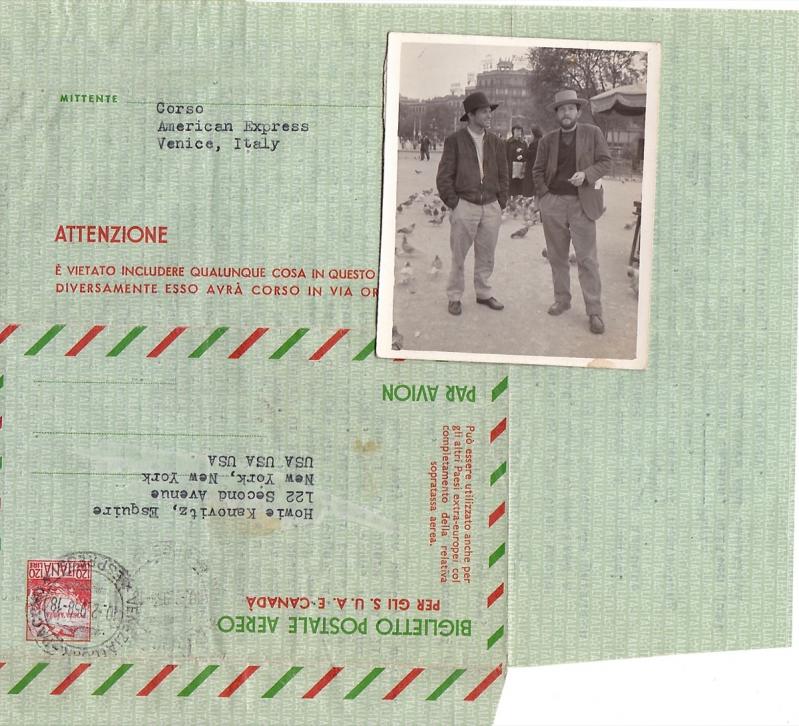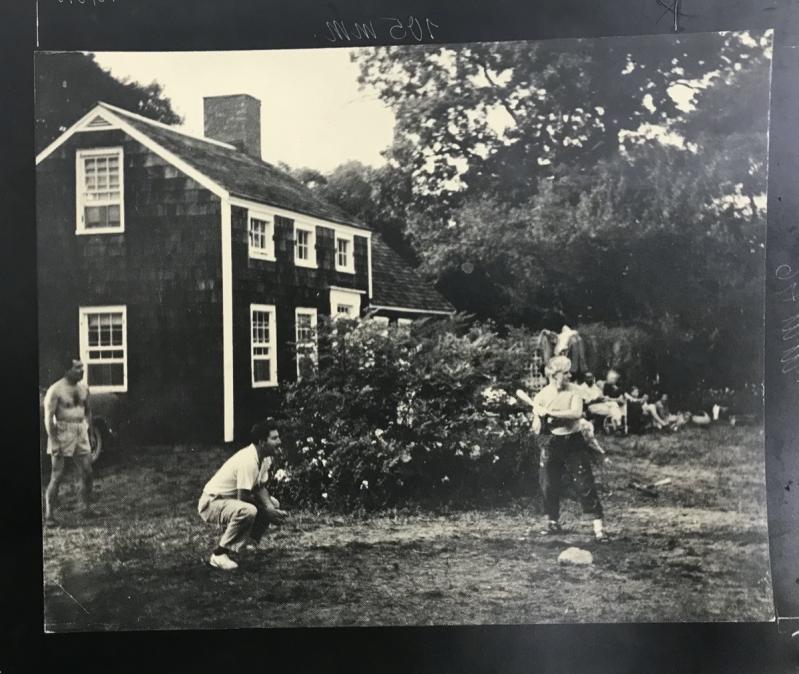What determines an artistic legacy and who decides whether that legacy has value in preservation? The first question is essentially relative, but the second one has a more obvious answer.
For American artists whose papers don't naturally relate to a specific site, like a historic house or associated academic setting, the chief repository is the Archives of American Art. In January, it accepted the papers of Howard Kanovitz, an artist who lived and worked all over the South Fork during his career and died in 2009.
Part of the Smithsonian Institution since 1970, the archives were started in the 1950s by the Detroit Institute of Arts. An early leader in the promotion of American and modern art, the museum director at the time, along with a collector, a member of the Ford family, and a group of scholars and businessmen, started the repository out of concern that materials relating to American art and artists were not being preserved. The archives, many of which are also available on microfilm at an office in Manhattan, are housed in the Old Patent Office Building in Washington, D.C.
One of the archives' regular events is an "Unboxed Lunch" in which new acquisitions are presented in a sneak peek before they are fully processed. On March 26, the Kanovitz papers were shared in this format by Jacob Proctor, a collector with the archives.
Carolyn Oldenbusch, the artist's widow, told The Star that what she and Kanovitz referred to as "the archiving project" was initiated in 2008. "He was as enthusiastic about that as he was about any new undertaking," she recalled. "He bought special equipment for dictating his memoirs and we were all set to go when he went into the hospital for heart bypass surgery and never came out."
She decided to continue the project on her own, sorting and organizing in a new house in Sag Harbor, with "photos all over the living room, many boxes under beds, and slides in much more disarray than Howard had kept them." A visit with an archives staffer sometime later confirmed their value, and donation papers were left with her. "But it took the uninterrupted swath of time of the pandemic to review the material, complete the project, and simply let go," she said.
Mr. Proctor said the donation had been initiated by his predecessor. "Although Kanovitz himself wasn't very familiar to me, as I started looking through, I realized that many of his friends and colleagues and associates were," he said. As such, the papers provide an additional depth and context to a circle of artists who were working at midcentury and beyond. "Often it's the artists who are not the most famous names who actually have some of the most interesting papers."

He added that after he started looking into the papers and doing some of his own "research about the artist himself, I realized that this is someone who actually was incredibly prominent at the time, and for whatever reason has become less so over the years."
Noting that Kanovitz was called "the godfather of Photorealism" by the scholar and critic Barbara Rose, he added that the painter didn't see himself as a Photorealist. Instead, he told Sherrill Foster in 1981 that he was more interested in reality viewed psychologically. "He is not concerned with the image of man, not with the image of things, but with what passes between them. In this way the most ordinary of things become special things," she wrote.
Before Kanovitz became engaged with art, he had wanted to be a jazz musician and performed with Larry Rivers, another artist who loved playing jazz, for many years. And before he adopted realism, he was an Abstract Expressionist.
When he came to New York in the 1950s, Franz Kline hired him as an assistant. Around this time, he was captured in one of the iconic "artists playing softball" pictures that begat the legend of the artists and writers games. The photo, included in the papers, shows Willem de Kooning at bat, Kanovitz catching, and Kline as umpire.
Mr. Proctor shared letters from the musician Morton Feldman and Rivers, some of which Kanovitz received when he lived in Europe and North Africa for a time and traveled with the poet Gregory Corso. Included is a photo with Corso in Nice in the mid-1950s. Kanovitz was also friends with Frank O'Hara, John Ashbery, Kenneth Koch, and other writers of the New York School.
Another photo in the archives shows Rivers playing saxophone and Kanovitz on trombone at the Five Spot in Manhattan in the 1960s. From the same period is a photo of the artist "sitting in his paint-splattered studio, of course, smoking a cigarette and wearing a suit," Mr. Proctor noted. He pointed out some representational paintings in the background. "In '63, it seems he had a bit of an 'a ha' moment and began painting figures and he ran with it." By 1966, Sam Hunter gathered these paintings for a solo show at the Jewish Museum.

It is here where his artistic legacy lies in wait for future researchers. According to Ms. Oldenbusch, Kanovitz had the first New York museum of show of "new realism," in which he "confronted photography in varying ways." This was while Abstract Expressionism was still the "art orthodoxy" and he was still successful. "This midcentury break, and the controversy it caused, is clearly documented" in the donated papers and catalogues, "along with a complete set of images," she said.
A Village Voice review of that exhibition by Peter Schjeldahl lauds his "cunning eye to the stiffly 'informal' pose, the assertively banal or enigmatic situation." He noted the difference of the artist from "fellow 'realists' like Alex Katz and Philip Pearlstein, who share his methods, in his refusal to disguise the 'photographness' of his images coupled with his insistence on the absolute rigor and clarity of his overall designs."
Describing a painting called "The Dance," Mr. Schjeldahl said, "Kanovitz renders his [then] wife and himself front-center in the midst of a desultory fox trot. Behind them are six anonymous bourgeois people poised for conversation, or boredom, or something. Mary [Rattray] Kanovitz's face bears the self-contemplative radiance of a Florentine Madonna. But Howard Kanovitz gazes straight out at us with a look that mixes pleasure and anxiety, as if the rich and disturbing ambience of the unlikely array behind him were projecting through his eyes."
It's difficult to comprehend that a painter of such complexity would be lost to the dustbin of history. And, in fact, as Mr. Proctor noted, the artist has had a healthy following and collection history in Germany and Western Europe since his inclusion in the 1972 edition of "Documenta," a comprehensive contemporary art exhibition that takes place every five years in Kassel, Germany. There, he was included in a section on photo-based and realist painting with Chuck Close, Robert Bechtel, Gerhard Richter, Sigmar Polke, and other internationally known artists who have worked in the genre. From there, his work entered several major German museums and collections and he regularly exhibited there, including a show in Frankfurt in 2008.
Of that show, called "Camera and Mirror," a critic said, "Kanovitz cannot tell where his work is going to lead him. He is curious about it. That curiosity is what keeps this nearly 80-year-old young, and his work so fresh, so alive."
The archives allow him to keep that vitality, more than a decade after his death and likely in the years to come.




